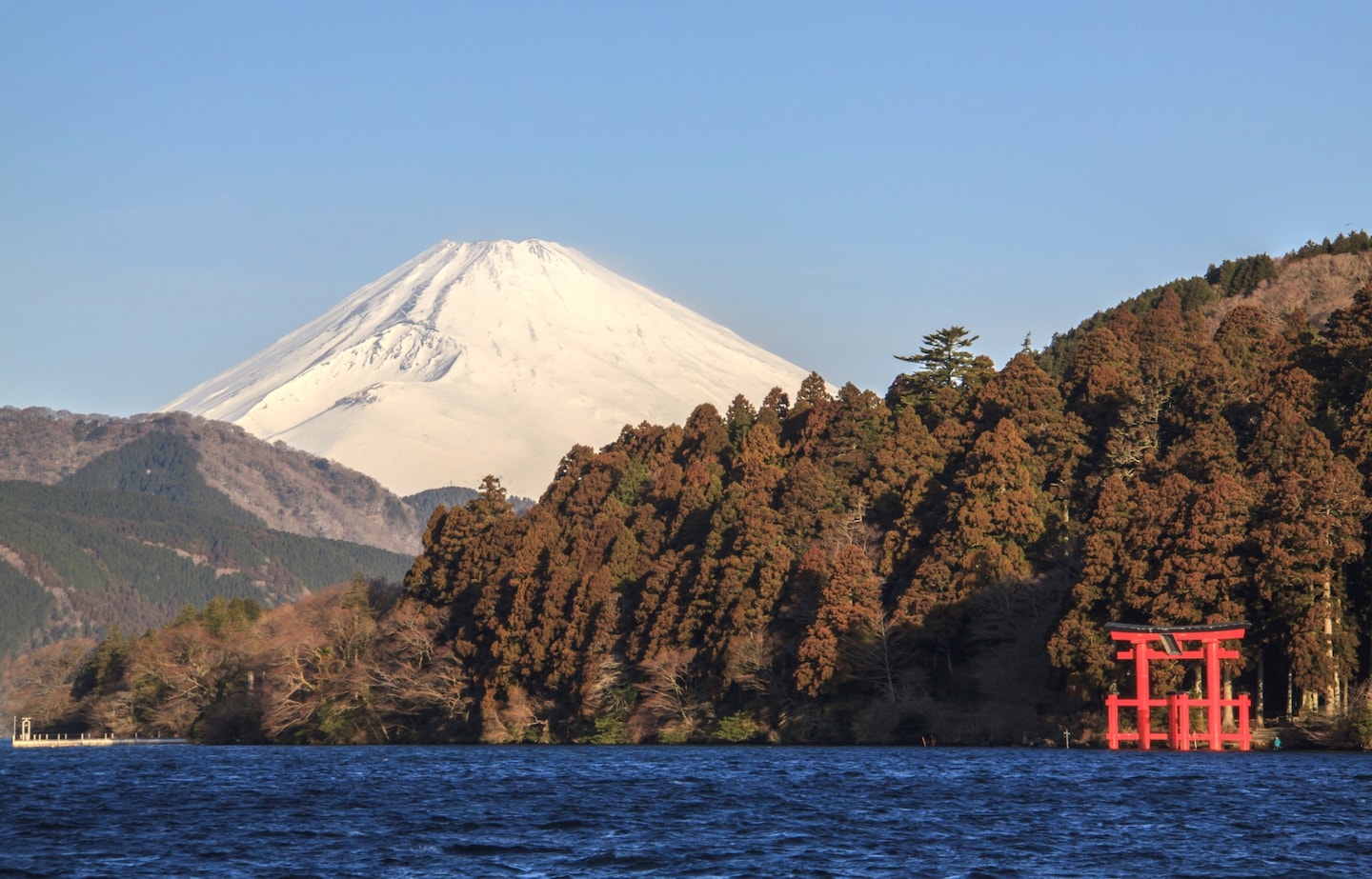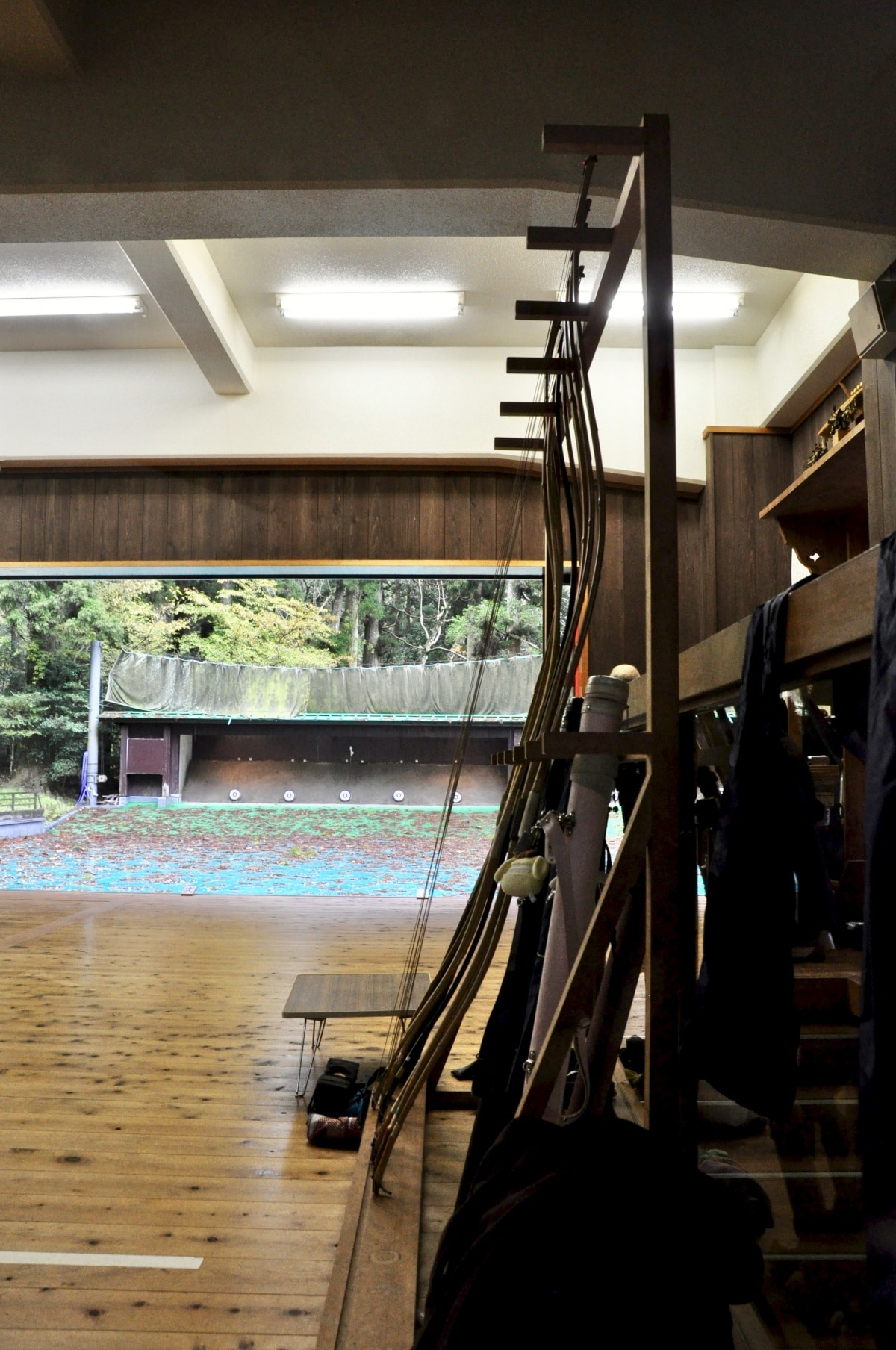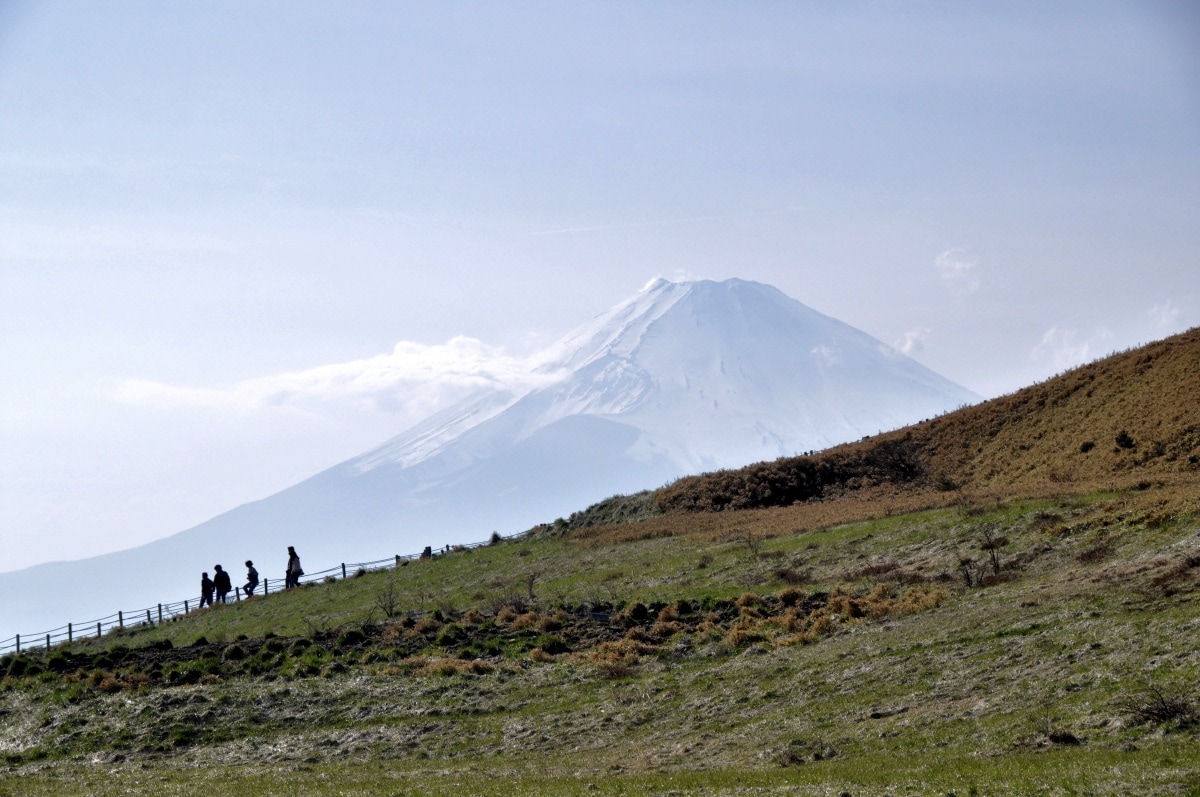Hakone Shrine: Home of the Nine-Headed Serpent
The Hakone hot spring resort region is centered on Mount Hakone (箱根山・Hakone-yama), a massive, multi-peaked volcano with a crater lake in its southern corner.
By Michael KanertHakone Shrine
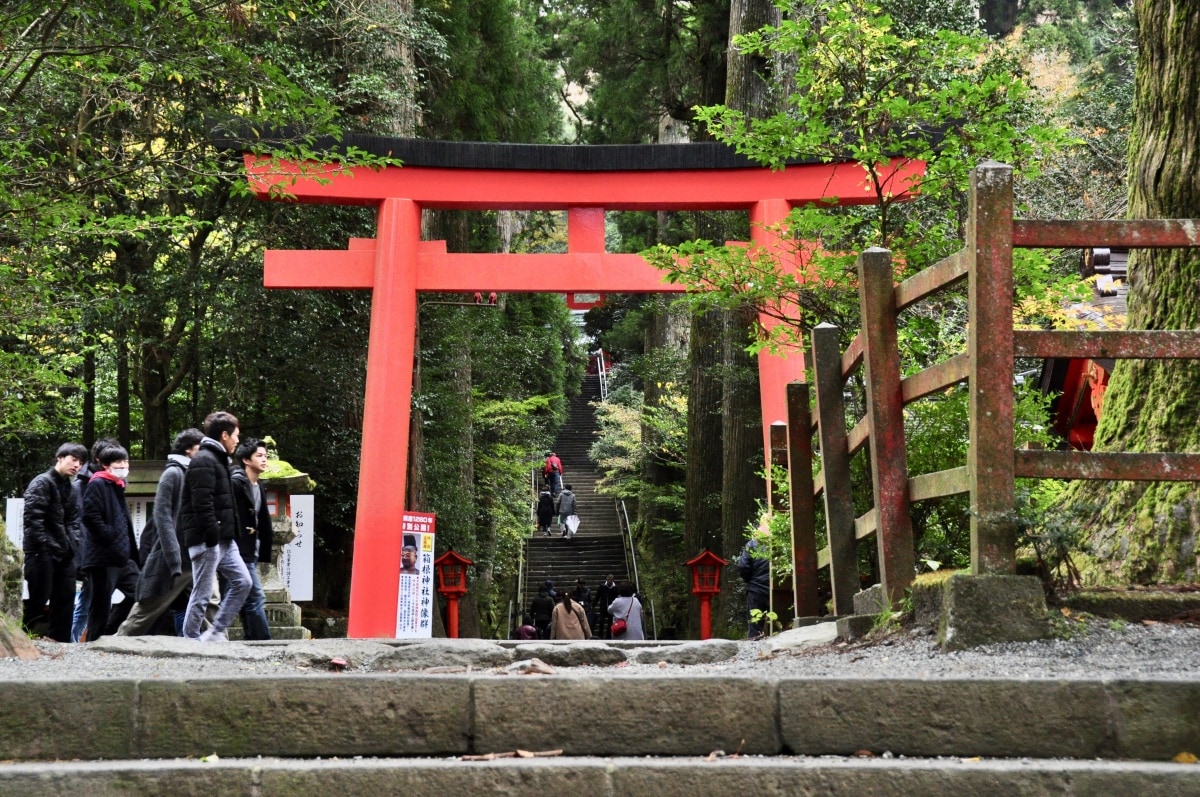
Japan's earliest historical records suggest that Mount Hakone may have been worshipped for at least 2,500 years. There is mention of a shrine having been erected on its Komagatake (駒ヶ岳) peak as a site to revere adjacent Kami peak (1,438 meters/4,718 ft), the highest peak of Mount Hakone, during the reign of Japan's legendary fifth emperor, Kosho, who is traditionally said to have reigned from 475 to 393 B.C.
The monk Mangan established a shrine at the present location on the shore of Lake Ashi in 757. He is then said to have subdued a nine-headed dragon (九頭龍・kuzuryu) that lived in the bottom of the lake, after which he constructed Kuzuryu Shrine (九頭龍神社・Kuzuryu Jinja) as part of the greater shrine complex, now deifying the defeated dragon as an embodiment of the protective sea god Ryujin. The Ashinoko Kosui Matsuri (芦ノ湖 湖水まつり) celebrates the dragon deity every July 31, kicking off Lake Ashi Summer Festival Week, which runs until August 6.
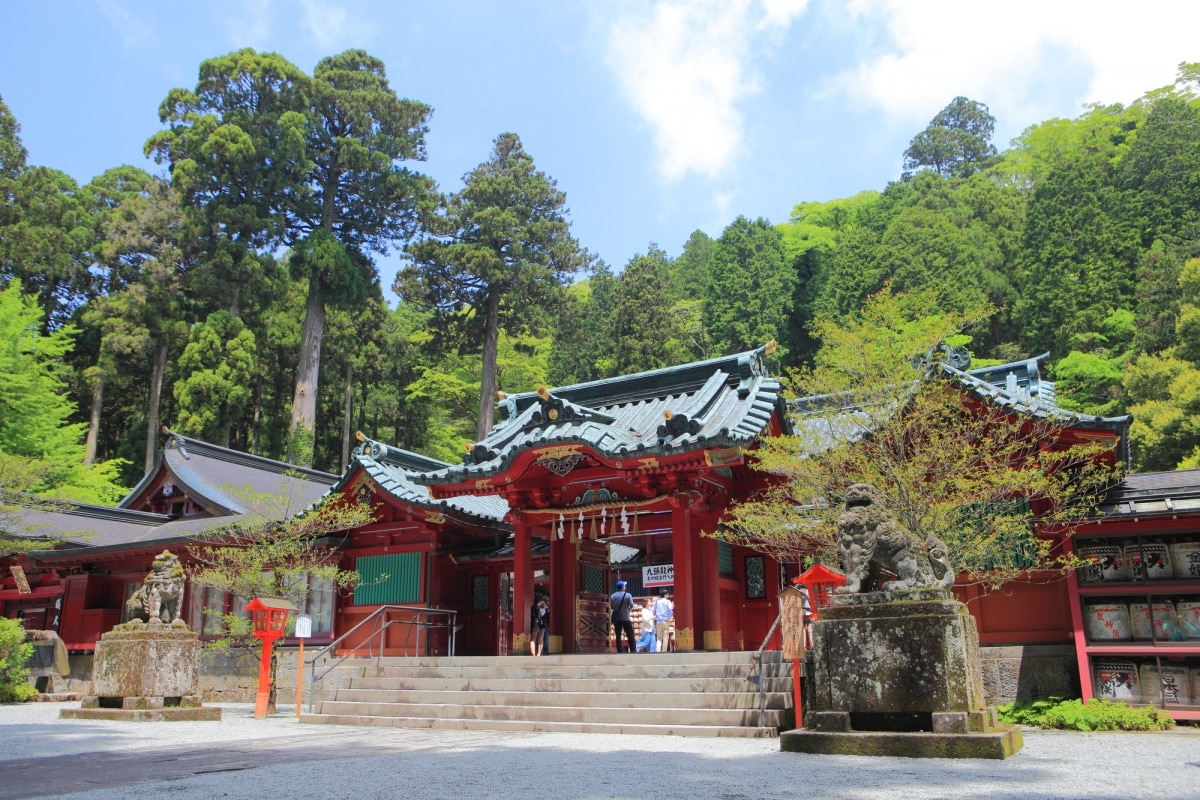
https://pixta.jp/tags/%E7%AE%B1%E6%A0%B9%E7%A5%9E%E7%A4%BE?utf8=%E2%9C%93&keyword=%E7%AE%B1%E6%A0%B9%E7%A5%9E%E7%A4%BE&search_type=0
Meanwhile, Hakone Shrine (箱根神社・Hakone Jinja) itself enshrines the principal deities of Hakone: Ninigi no Mikoto, grandson of the sun goddess Amaterasu; Konohana Sakuya-hime, Ninigi's wife and the goddess of Mount Fuji; and their third son, Hoori no Mikoto, who went on to marry the daughter of a sea god and whose grandson, Jimmu, became the legendary first emperor of Japan.
The shrine would later gain the favor of Minamoto no Yoritomo, the first Kamakura shogun, who took refuge on the grounds in 1180, after losing an early battle with his Heike rivals. Following the establishment of the Kamakura Shogunate (1185-1333), the shrine flourished as it gained popularity among the warrior class.
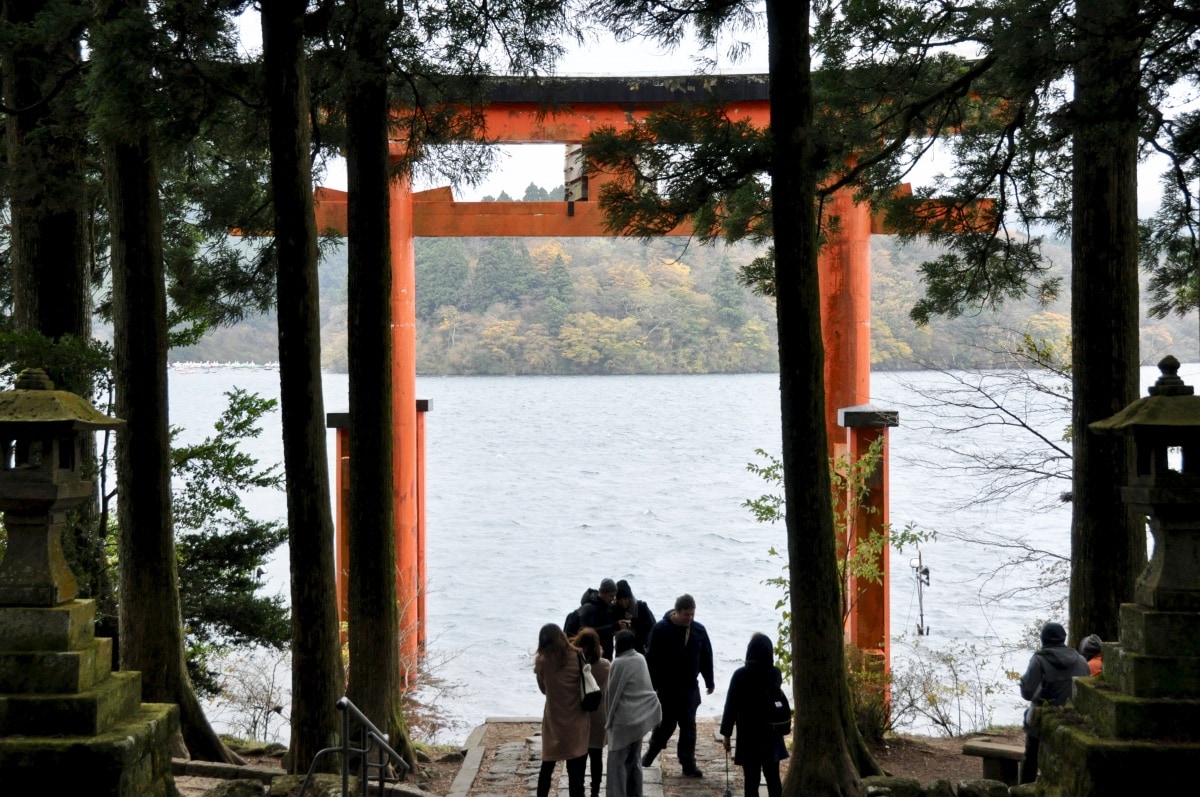
The shrine was known as Hakone Gongen (箱根権現, where gongen means "incarnation" or "avatar") prior to the separation of Buddhism and Shintoism that came with the Meiji Restoration in 1868. It can be found ensconced in a forest, approached by an avenue of 800-year-old cedars. A long set of steps leads from the main hall (本殿・honden) all the way to the lake, where a large red torii gate, erected in 1964, celebrates the San Francisco Peace Treaty signed in 1951.
You can also find a kyudo archery range halfway up the steps—and if you're lucky, you'll be able to catch people practicing inside!
Hakone Shrine
Address: 80-1 Motohakone, Hakone Town, Ashigarashimo District, Kanagawa
Hakone Shrine Mototsumiya
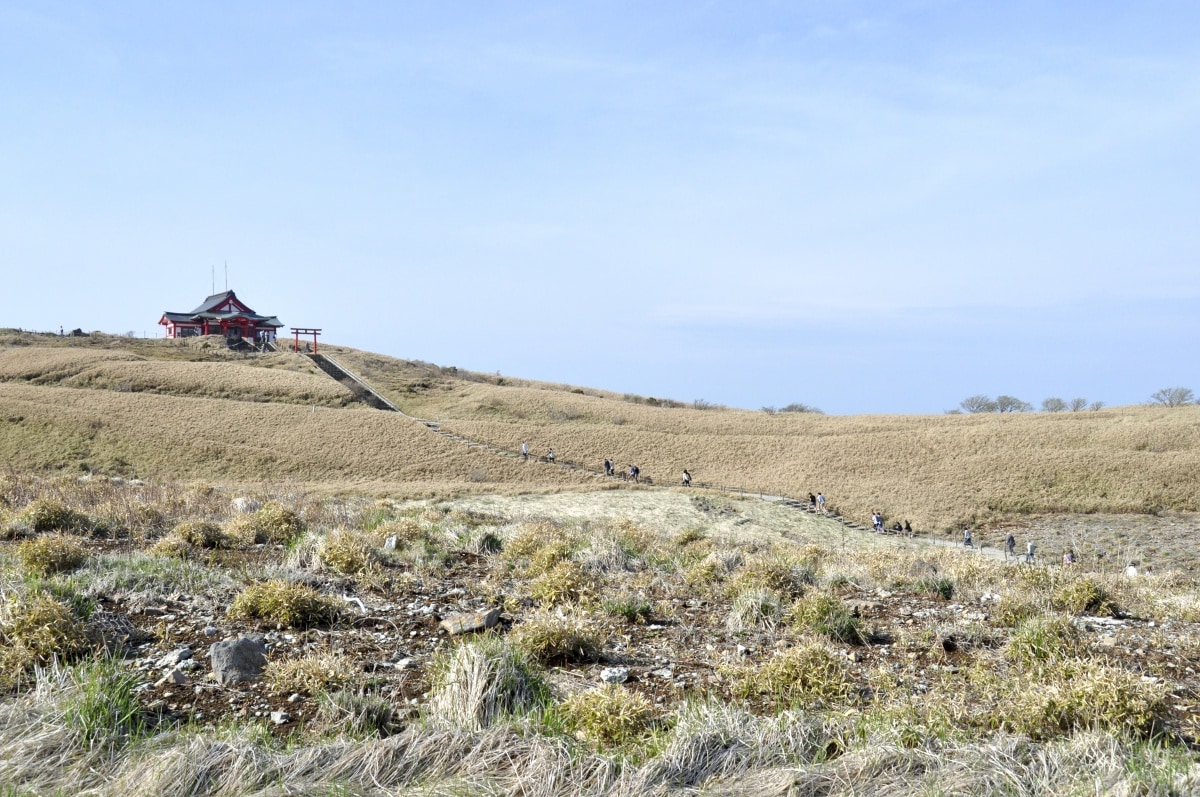
The original shrine atop Komagatake peak was rebuilt in 1964 as Hakone Shrine Mototsumiya (箱根神社元宮・Hakone Jinja Mototsumiya). Accessible via the Hakone Komagatake Ropeway (箱根駒ヶ岳ロープウェー), the summit offers great views of Mount Fuji and the surrounding area on a clear day.
It's also believed to be a power spot. The ropeway is a 30-minute walk or 10-minute bus ride from Hakone Shrine.
Hakone Shrine Mototusumiya
Ropeway Hours: 9:10 a.m.-4:30 p.m. (last descent at 4:50 p.m.)
Ropeway Fare: ¥1,080 round-trip
Kuzuryu Shrine
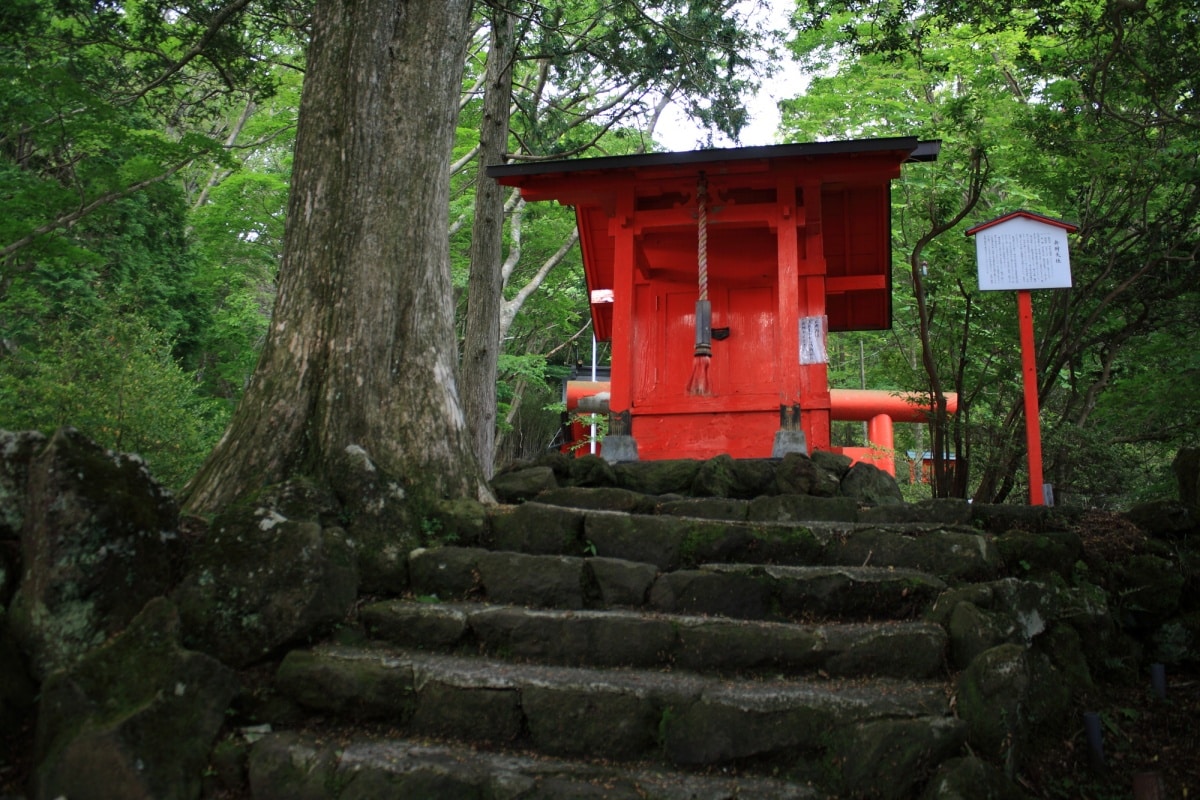
https://pixta.jp/tags/%E7%AE%B1%E6%A0%B9%E7%A5%9E%E7%A4%BE?utf8=%E2%9C%93&keyword=%E7%AE%B1%E6%A0%B9%E7%A5%9E%E7%A4%BE&search_type=0
While Kuzuryu Shrine is considered to be a part of Hakone Shrine, it too is located quite far away—roughly 4 kilometers (2.5 mi) up the shore, even further than Hakone Shrine Mototsumiya! Now believed to be a power spot in itself, Kuzuryu Shrine is a popular spot for making prayers for love and relationships.


